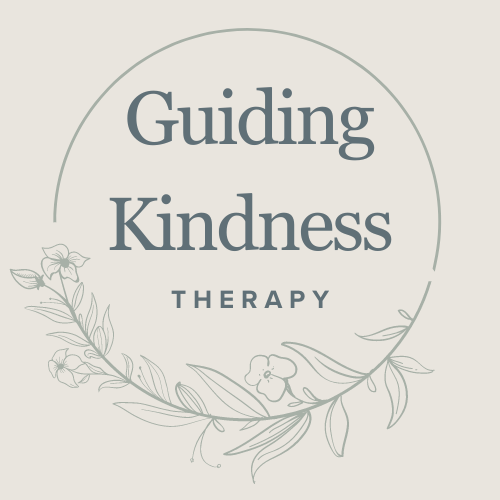So, What is EMDR Therapy?
You’ve been searching for different modalities that can help you potentially find relief from the trauma you have experienced in your life. You see a lot of letters but aren’t quite sure what they all mean, we get it! One type of treatment that comes up a lot when you do the research is EMDR but what exactly is it and how does it help?
We are professionals in EMDR therapy here at Guiding Kindness Therapy and we pride ourselves on not only treating our patients suffering from trauma with compassion and consideration but we also want our clients to learn about the process as well. Nothing behind closed doors here, so let’s dive into EMDR.
So, What Does EMDR Mean and How Does It Help?
EMDR or Eye Movement Desensitization Reprocessing is a therapy modality that is specifically used to treat trauma. However, it can be used for almost all diagnoses including ADHD, Generalized Anxiety Disorder, and Major Depression. It has also been effective in treating conditions such as anxiety, PTSD, depression, and phobias. EMDR helps you reprocess events and feelings that are stuck in your nervous system. Just like REM sleep it helps people process things that have happened and heal more productively.
The Phases of EMDR Therapy
There are eight phases of EMDR therapy (don’t worry, it seems like a lot but it also is beneficial) to complete these are:
History Taking: The therapist gathers background information to understand the client’s history and the specific trauma or issues they want to address.
Preparation: This phase builds trust between the therapist and the client. The therapist explains the EMDR process and prepares the client by teaching relaxation techniques to manage distress during the sessions.
Assessment: The therapist and client identify specific traumatic memories or distressing events. The client also rates the emotional distress associated with the memory on a scale (Subjective Units of Distress, or SUD).
Desensitization: This phase involves the core process of EMDR. The therapist asks the client to focus on the traumatic memory while simultaneously engaging in bilateral stimulation, often through eye movements (following the therapist's fingers with their eyes). The stimulation is thought to help the brain reprocess the memory, reducing its emotional charge over time.
Installation: The goal here is to replace the negative beliefs linked to the trauma (e.g., "I'm worthless," "I'm unsafe") with positive beliefs (e.g., "I am worthy," "I am safe"). The client is encouraged to focus on the positive cognition while continuing bilateral stimulation.
Body Scan: The client is guided to focus on any physical sensations in their body, particularly any tension or discomfort that might still be present. This phase helps clear any residual physical stress related to the trauma.
Closure: The therapist ensures that the client leaves the session feeling stable and grounded. If the trauma hasn’t been fully resolved, the therapist might guide the client through relaxation techniques or other coping strategies to handle any remaining distress.
Reevaluation: At the beginning of the next session, the therapist checks in on the client’s progress. They discuss whether the traumatic memory or negative belief has been processed, and they evaluate the overall impact of the therapy.
Who Is EMDR For and Who Can Benefit From It?
We want to always ensure those who are seeking EMDR can benefit from the experience. EMDR can be used to treat any diagnosis however here are the top three that can most benefit from EMDR therapy or an EMDR Therapy Intensive.
Individuals with Post-Traumatic Stress Disorder (PTSD):
EMDR is especially effective for people diagnosed with PTSD, which may result from experiences such as:
Physical, sexual, or emotional abuse
Combat or war-related trauma
Natural disasters or accidents
Loss of a loved one, especially in traumatic circumstances
Witnessing or experiencing violence or severe injury
EMDR helps process traumatic memories and reduce the intensity of distressing symptoms like flashbacks, nightmares, hypervigilance, and avoidance.
People Struggling with Anxiety and Panic Disorders:
EMDR can be helpful for individuals who have anxiety or panic disorders, especially if these conditions are rooted in past traumatic events. It works to reprocess distressing memories or situations that may be contributing to feelings of anxiety or fear.
Those with Complex Trauma (C-PTSD):
Complex PTSD often develops from prolonged exposure to trauma, such as childhood abuse, long-term emotional neglect, or being in an abusive relationship. People with complex trauma may benefit from EMDR's ability to process multiple layers of traumatic experiences and integrate them into a healthier narrative.
Ultimately, EMDR therapy can be helpful for the majority of people seeking therapy. It can be utilized in conjunction with talk therapy. If you or someone you know could benefit from EMDR therapy please reach out to Guiding Kindness Therapy. We are located in Bala Cynwyd, PA and support the Philadelphia area, the Main Line, and can also see Pennsylvania clients virtually!

